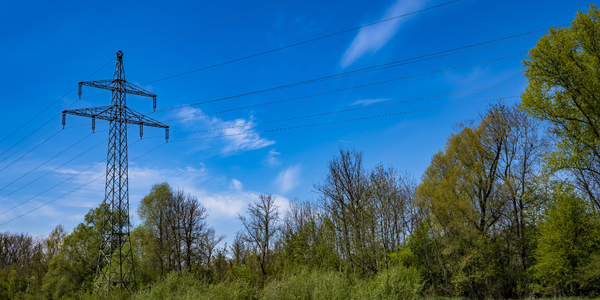公司规模
Large Corporate
地区
- America
- Asia
- Europe
- Middle East
国家
- United States
- Worldwide
产品
- JDA Demand
- JDA Travel Price Optimization
技术栈
- Demand Forecasting
- Price Optimization
实施规模
- Enterprise-wide Deployment
影响指标
- Revenue Growth
- Productivity Improvements
技术
- 分析与建模 - 预测分析
- 功能应用 - 库存管理系统
适用功能
- 销售与市场营销
- 商业运营
用例
- 补货预测
- 需求计划与预测
服务
- 系统集成
- 培训
关于客户
卡尔森酒店集团是一家全球性的酒店公司,在服务和质量方面享誉全球。该公司在竞争激烈、价格驱动的环境中运营,并不断寻求脱颖而出并最大化收入的方法。尽管卡尔森酒店集团拥有强大的市场地位,但它认识到需要一种更复杂的方法来将价格与实际需求相匹配,以优化其收入。该公司希望不仅根据入住率来衡量其成功,还希望根据个人预订产生的收入以及在低需求周期报出更高价格而导致的“错失机会”的价值来衡量其成功。
挑战
由于市场透明度和互联网预订的快速增长,酒店业正面临一场新的价格战。这给包括卡尔森酒店在内的酒店运营商带来了重大挑战,他们一直在寻找在这种竞争激烈、价格驱动的环境中脱颖而出并实现收入最大化的方法。传统的收益管理只有在市场条件导致售罄晚数减少时才会偶尔有效。卡尔森酒店发现需要一种更复杂的方法来将价格与实际需求相匹配,这样他们就可以不仅根据入住率来衡量他们的成功,还可以根据个人预订产生的收入以及在低需求周期报出更高价格而导致的“错失机会”的价值来衡量他们的成功。
解决方案
Carlson Hotels 向 JDA Software 寻求一种截然不同的方法。他们启动了一项名为 SNAP(住宿晚数自动定价)的新收入优化项目,使用 JDA Demand 和 JDA Travel Price Optimization 为酒店经营者带来更高的收入。Carlson Hotels 现在能够量化价格弹性并使用该输出来生成最优价格,将竞争对手的数据引入其收入管理系统并预测客户对价格变化的反应。JDA Demand 提供了强大的预测功能,使 Carlson Hotels 能够更快地对需求或竞争价格的变化做出反应。通过将 JDA Demand 与 JDA Travel Price Optimization 相结合,Carlson Hotels 能够从基于产品和对竞争影响的猜测定价转变为基于需求预测和与实时竞争对手价格相比的价格弹性定价。
运营影响
数量效益

Case Study missing?
Start adding your own!
Register with your work email and create a new case study profile for your business.
相关案例.
Case Study
Pepsico's Transformation to Smarter Sales Forecasting with Designer Cloud
PepsiCo, a global consumer packaged goods company, faced a significant challenge in calibrating sales forecasting to supply the right product quantities to its retailers. The sales forecast incorporated a variety of data, including warehouse data, store stock data, and promotional forecast data, all of which were provided by retailers in different file formats and delivered using various methods. The primary challenge was the speed of preparing a sales forecast. With the existing Microsoft Access and Excel-based processes, the time required to prepare this data was so extensive that analysts could only leverage it once a month or not at all. This inefficiency risked under or oversupplying retailers, potentially impacting PepsiCo's business operations and customer relationships.

Case Study
Gexa Energy and AutoGrid's Innovative Demand Response Programs in ERCOT
Gexa Energy, a leading retail electricity provider in Texas, was seeking to introduce new demand response programs for its commercial and industrial customers in the Electric Reliability Council of Texas (ERCOT) market. The challenge was to provide a platform that would allow these customers to lower their energy bills by adjusting their energy consumption during peak energy demand or high wholesale electricity prices. The solution needed to be intelligent, scalable, and offer both manual and automated options for adjusting energy consumption. The demand response programs needed to include Emergency Response Service (ERS), Real-Time Price Response (RTPR), and 4 Coincident Peak (4CP).

Case Study
ZettaNet's Agile Juniper Network Meets Booming Digital Demand in Australia
ZettaNet, a privately-held company based in Perth, Australia, was facing a significant challenge due to the exponential demand for enterprise network, data center, and cloud services in the region. The company's business growth necessitated an upgrade of their core network to meet the increasing bandwidth requirements of their customers. The customers, which primarily include managed service providers, were demanding 1 Gbps connectivity between locations. These service providers then deliver network, data center, cloud, and voice services to a diverse range of customers including local businesses, schools, hospitals, residential communities, and government offices in Western and Southern Australia. The challenge for ZettaNet was to meet this high-capacity network services demand while maintaining profitability.
Case Study
Procter & Gamble Implements Terra Technology's Demand Sensing for Improved Forecast Accuracy
Procter & Gamble (P&G) faced significant challenges in accurately forecasting short-term demand for their consumer products. Their existing 24-month forecast provided a good overview for monthly or weekly production, but it was insufficient for the immediate needs of supply chain planning and manufacturing teams. These teams required a short-term forecast to plan production effectively and avoid 'fire-fighting' practices. P&G needed a solution that could provide accurate short-term demand forecasts to ensure agility and flexibility in manufacturing, especially for products with very short production and order lead times. The company explored various solutions but found that most big software companies lacked the agility to meet their specific demand sensing needs. Terra Technology's Real-Time Forecasting, later known as Demand Sensing (DS), emerged as a promising solution due to its specialized focus on consumer packaged goods (CPG) demand planning and forecasting.
Case Study
Blue Bottle Coffee Enhances Ordering Accuracy and Reduces Waste with ML-Driven Demand Forecasting
Blue Bottle Coffee (BBC), a global coffee roaster and retailer, faced a significant challenge in managing the supply of pastries across its international network of cafes. The company was using a manual ordering system, where cafe leaders estimated the required quantity of pastries based on historical sales data, current inventory, and growth projections. This system was effective when BBC had a few cafes, but with over 70 cafes worldwide, it became inefficient and inaccurate. The inaccuracies led to either under-ordering, causing sell-outs and customer dissatisfaction, or over-ordering, resulting in food waste and profit loss. The suboptimal utilization of pastries was also affecting BBC's bottom line. Therefore, BBC needed a scalable, precise, and predictive ordering solution to improve pastry ordering accuracy, reduce food waste, and meet its sustainability goals.
Case Study
MARS Incorporated: Leading a Global Digital Transformation
MARS Incorporated, a multinational manufacturer, faced significant challenges in digitizing and standardizing processes across its mid-markets globally. The company's reliance on legacy solutions necessitated continuous, time-consuming upgrades and made data compilation and comparison across different regions and business units difficult. Excel spreadsheets were extensively used for forecasting in smaller markets, leading to disconnected processes, siloed working environments, and increased risk of data inconsistencies and inaccuracies in demand forecasting. MARS also struggled with a lack of visibility across its midmarket footprint, scattered critical data across various systems and spreadsheets, a low degree of automation, and insufficient statistical analytics for demand planning. The absence of a standard process for demand planning made it challenging to consolidate KPIs and gain a comprehensive view of demand trends and supply chain performance.







